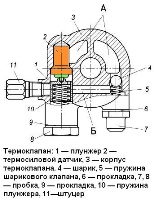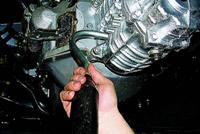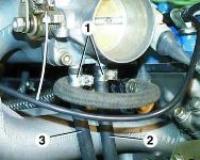Checking and replacing brushes and a voltage regulator on cars with an engine of the ZMZ-405, ZMZ-406 type
On engines of the ZMZ-406 and ZMZ-405 families, generators 9422.3701 or 5122.3771 with built-in integrated voltage regulators are installed.
Verification of the voltage regulator
In order to make sure that the voltage regulator is malfunctioning, we turn off all consumers except for the side light and measure the voltage at 1000-1200 min-1, which should be in the range of 13.5-14.2 V .
Connect a 12 V test lamp to the brushes.
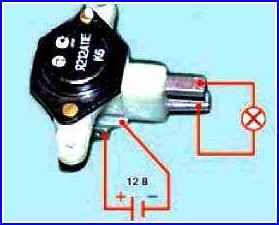
Submit 12 V voltage "+" to the terminal, and "-" to the "mass" of the brush holder.
In this case, the control lamp should be on.
If the control lamp does not light up, the voltage regulator needs to be replaced.
Replacing the generator voltage regulator 9422.3701 or 5122.3771
The voltage regulator is made in a single housing with a brush holder.
Disconnect the battery.
Disconnect the wires from the generator outputs, remove the plug from the generator plug output.

Unscrew the nut with the “10” key
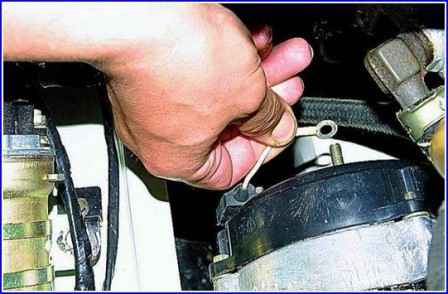
Remove the lugs of the capacitor wire from the "+" terminal of the generator.
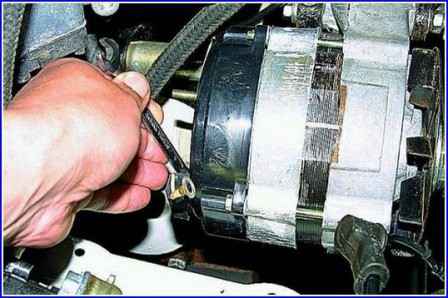
Use the “8” key to unscrew the condenser fastening nut
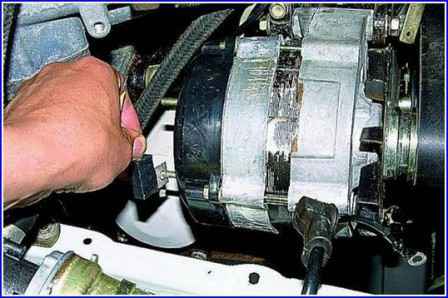
Remove the capacitor.
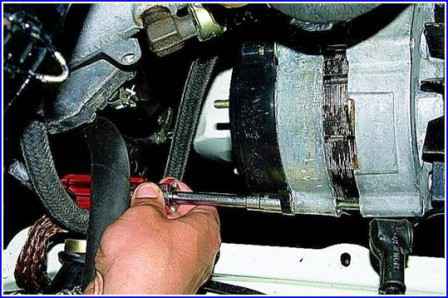
Using the “8” head, we unscrew the two nuts securing the plastic casing of the generator

Remove the cover.
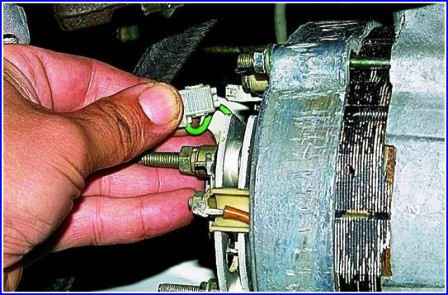
Remove the plug from the output of the voltage regulator
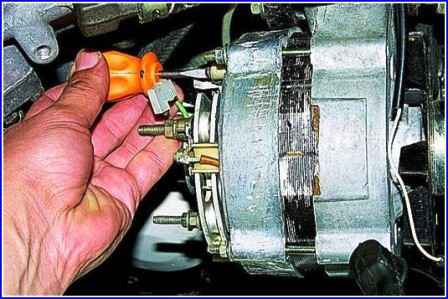
With a short screwdriver, unscrew the two screws securing the regulator to the generator
Remove the voltage regulator assembly with the brush holder (Fig. 9)
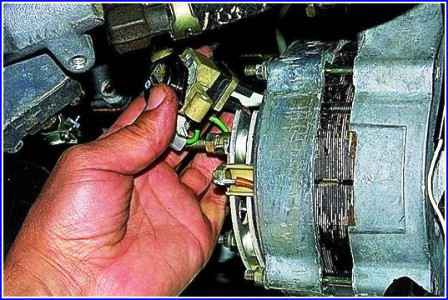
Install the regulator in reverse order
Checking the condition of the brushes and brush holder
Check the protrusion "a" of the brushes from the brush holder.

If the dimension "a" of the protrusion of the brushes in the free state is less than 4.5 mm, replace the brush holder assembly with the voltage regulator.
We replace the brush holder with worn brushes as an assembly.
Checking and replacing the brushes and voltage regulator of a car with a ZMZ-402 engine
For cars with engines ZMZ-4025 and ZMZ-4026, generators 16.3701 or 191.3701 are installed, which are not equipped with a built-in voltage regulator.
These generators work in conjunction with an external transistor voltage regulator type 13.3702-01 or 50.3702, which has electronic protection against short circuit in the generator excitation winding circuit.
The regulator is installed in the engine compartment and attached to the engine compartment mudguard with two nuts.
The regulator provides a battery charging voltage of 13.4 - 14.7 V at a generator speed of 2800 - 12,000 min-1, corresponding to an engine crankshaft speed of 1400 - 6000 min- 1, load 5 - 40 A and temperature from -20 to +80 °C.
At the terminals "Sh" and "-" of the regulator, the voltage drop should be no more than 1.6 V at a current of 4 A in the excitation winding circuit of the generator and a temperature of +20 ° C.
Before checking the regulator, make sure that the alternator belt tension is correct, and the regulator has good contact with the "ground" (if necessary, adjust the belt tension and tighten the nuts securing the regulator to the body).
Do not connect additional consumers of electricity to the power supply circuit of the excitation winding of the generator, as in this case the voltage of the generator will increase greatly.
1. Before checking the voltage regulator, check the condition of the wires and the reliability of the connections between the generator, the voltage regulator and the battery.
It should be noted that the lack of charging current may be caused by the operation of the regulator protection circuit in the event of a short circuit in the generator excitation winding circuit.
When the short circuit is removed, the voltage regulator is restored.
2. The voltage regulator can be checked on the car.
For this you need a DC voltmeter with a measurement limit of up to 20 - 30 V and a division value of 0.1 - 0.2 V.
Start the engine and, while maintaining the engine speed of 1700-2000 min-1, turn on the dipped headlights.
In this case, the charging current according to the ammeter should be no more than 10 A.
If the ammeter shows a charging current greater than 10 A, turn off the low beam headlights and parking lights.
Measure the voltage at the "+" terminal of the battery, it should be 13.9 - 14.6 V at a regulator temperature of +20 °C.
If the voltage differs from the indicated values, then the voltage regulator is defective and needs to be replaced.
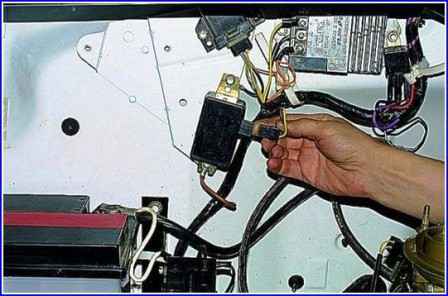
Disconnect the plug from the voltage regulator.

Using the “10” key, we unscrew the two bolts securing the regulator.
Under each of the bolts there are lugs of "mass" wires
Remove and replace the regulator.
Install the new regulator in reverse order.
Removing and checking the generator brushes
Disconnect the battery.
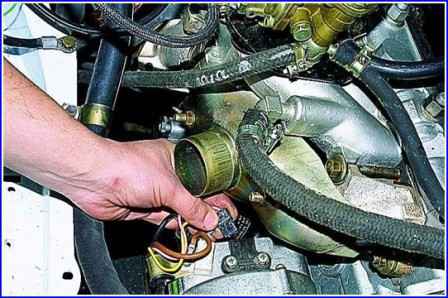
Disconnect the plug from the brush holder.

Using a slotted screwdriver, unscrew the two screws securing the brush holder
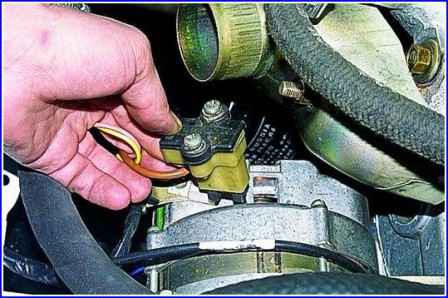
Remove the brush holder. Install the new brush holder in reverse order.

Check the protrusion "a" of the brushes from the brush holder when free.
If dimension "a" is less than 8mm, replace brush holder assembly or brushes
Check the ease of movement of the brushes in the brush holder.
If the brushes are stuck, remove the two fixing screws and remove the brush holder cover.
Clean the brushes and clean the holes in the brush holder.
If you cannot achieve the desired result, replace the brush holder assembly or brushes
Brushes with chips, cracks or other defects are also subject to replacement.







